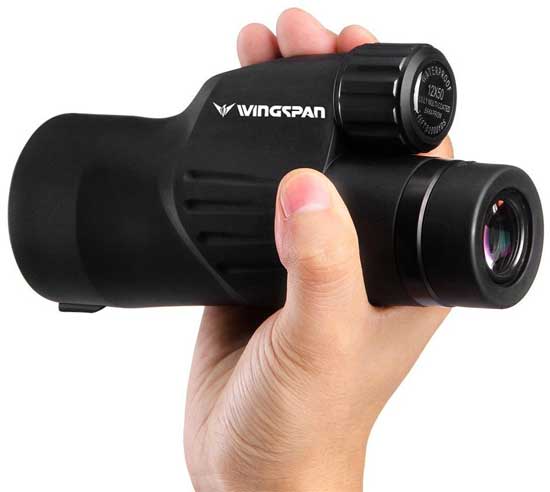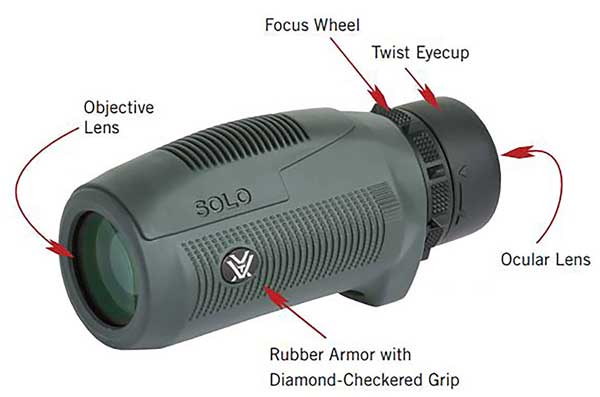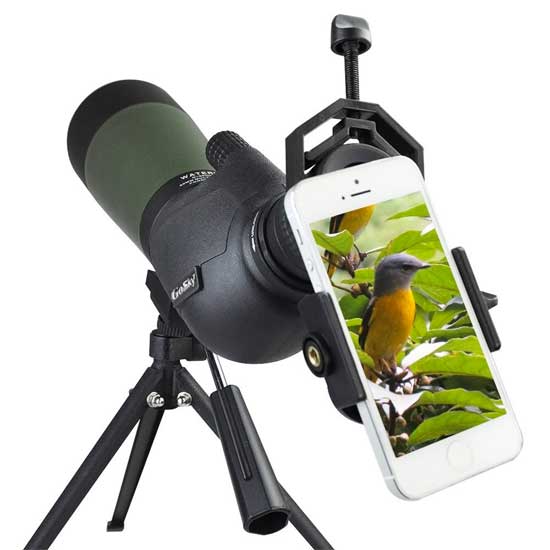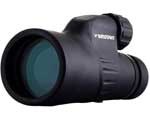Thinking about buying a monocular? Here’s what you need to know, things you can do with them and what the heck is a monocular anyway?
1. What is a Monocular?
A monocular is a handheld optical device that you use to view distant objects or landscapes with one eye. These devices work like telescopes, but they are smaller and easier to carry. Monoculars come in a variety of sizes and configurations and have a single or set of magnification lenses.
2. How Do Monoculars Differ from Binoculars?
Whereas binoculars use both eyes to view things, monoculars only use one. Binoculars can make the image feel more immersive, but monoculars are smaller and easier to carry. In addition, you can also use a monocular with one hand. Therefore, hikers like it because they can keep one hand free.
3. What are the Benefits of Monoculars?
- Portability: Monoculars are smaller and weigh less than binoculars. Therefore, they are more convenient to carry and comfortable to hold.
- Use with One Hand: Can be easier to use because you have one hand free.
- Cost-Effective: Monoculars typically cost less.
- Versatile: Use them for birdwatching, hiking, hunting and stargazing.
4. What to Look for When Choosing a Monocular:
1. Magnification power: Higher magnification can be useful for seeing distant objects. However, it can also make the image appear shakier or more distorted.
2. Objective lens diameter: This affects image brightness and clarity (see #6 below for details).
3. Field of view: A larger field of view means you can see a larger picture.
4. Eye relief: If you wear glasses, you may need a monocular with longer eye relief because it gives you more space between your eye and the lens.
5. Close focus distance: If you want to use your monocular to birdwatch or other close-up activities, look for a model with a short close focus distance.
6. Durability: Choose a monocular that has a rugged, weather-resistant design if you want to use it outdoors.
5. How Much Magnification Power?
Monoculars come in a range of magnification powers, typically from 6x to 12x. Lower magnification provide a wider field of view and are less prone to shaking or distortion.
On the other hand, you can see more detail on objects further away with greater magnification.
For example, the Vortex Optics Solo Monocular is available in 8x, 10x, and 12x magnification options, while the Gosky Titan Monocular offers a 12x magnification power.
6. What is the “Field of View”?
The field of view (FOV) is the width of the image portrayed the monocular, typically measured in feet at a 1,000 yard distance. A wider FOV allows you to see more of the surrounding area at once.
For example, the Bushnell Legend Ultra HD Monocular has a FOV of 340 feet at 1,000 yards, while the Wingspan Optics Explorer High Powered Monocular has a FOV of 246 feet at 1,000 yards.
7. What is the “Objective Lens Diameter”?
This is the width of the front lens of the monocular, measured in millimeters. It determines how much light the monocular can gather, which affects image brightness and clarity. Larger objective lenses provide better image quality. However, they also increase the size and weight of the monocular.
For example, the Wingspan Optics Explorer High Powered Monocular has a 12×50 objective lens diameter, while the Vortex Optics Solo Monocular has a 25mm objective lens diameter.
8. Can You Stargaze with a Monocular?
While you can use a monocular to stargaze, you’re better off using a telescope. Monoculars have a lower magnification. Therefore, it’s difficult to see dim or distant objects in the night sky.
9. How to Use a Monocular for Birdwatching:
First, scan the area with your naked eye to locate the animal or bird you want to view. Once you have located it, raise the monocular to your eye and adjust the focus until the image is clear.
To minimize shaking hold the monocular with both hands or steady it against a tree, use a tripod attachment or other stable surface. Then, use the zoom feature to adjust the magnification as needed, but keep in mind that higher magnification can make the image appear shakier.
Some popular models for bird watching and wildlife observation include the Vortex Optics Solo, the Celestron Nature DX Monocular and the Gosky Titan.





